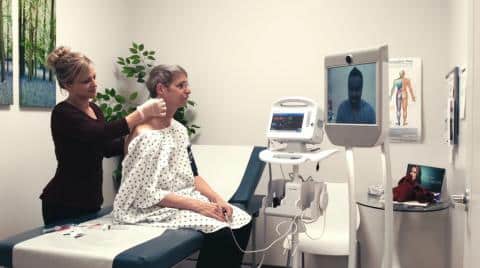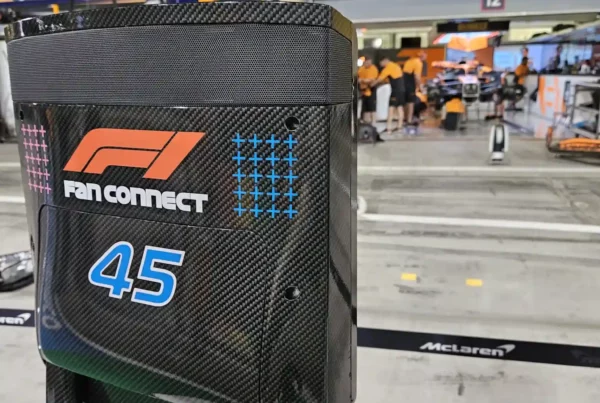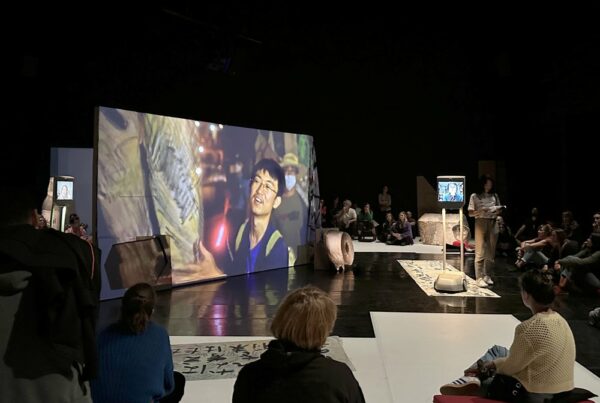The world of healthcare is a field where technological innovations, such as telepresence, are providing significant benefits. Hospitals, medical offices, dialysis centers… healthcare facilities are increasingly looking to improve patient care while also improving the efficiency of the nursing staff. Since 2017, CALYDIAL, a Lyon-based Associative Dialysis Center, has been offering its patients high-quality and decidedly innovative care. Two of the five centers located in the Auvergne-Rhônes-Alpes region are equipped with telepresence robots to enable doctors to monitor treatments remotely while being as close as possible to patients. Doctor Salvatore Citarda, nephrologist at the Calydial center in Vénissieux, France, shares his experience of telemedicine with a Beam® telepresence robot.
Telemedicine in Telepresence Robots
For Dr. Citarda, telepresence robots fit perfectly into patient care: “In a dialysis unit, it is important to know that medical presence is not necessary all the time. A visit must be made at least once a week. The Beam® telepresence robot has been implemented in order to improve the patient care process by ensuring a more frequent medical presence. Doctors can visit their patients more often, even when they are at a distance, for example, from another healthcare facility. We put in place a system of alternating between teleconsultation and face-to-face doctor visits.”
”"Telepresence solutions have generated major medical time savings."
Dr Salvatore Citarda, nephrologist at the Calydial center in Vénissieux
Furthermore, “telepresence solutions have generated a major saving in medical time”. Indeed, in case of an emergency or unforeseen event, a doctor can go to the dialysis center in a few clicks in order to be directly operational to make a consultation, take decisions and give instructions to the nurses present. “At a time when France is experiencing a growing shortage of doctors, the fact that a doctor can be mobilized to several health care facilities at any given time is a major advance. And this, while maintaining increased contact and proximity with patients. People undergoing dialysis are necessarily bedridden and cannot move around. Thanks to mobile telepresence, it is the doctor who comes to their bedside. A mobility that cannot be offered by traditional videoconference solutions.”
“Finding the right balance between teleconsultation and face-to-face”
The arrival of the Beam® telepresence robot at the CALYDIAL dialysis center in Vénissieux was at first surprising, but the device quickly became part of the routine, as Dr. Citarda explains: “It is clear that a certain amount of time was needed for the nursing staff to adapt. But once the right balance was found between teleconsultation and face-to-face visits, using the robot quickly became a habit.

Today, the presence of the device is very reassuring for the teams because the nurses know that they can call on a doctor at any time and that the doctor can be present on the spot”. In addition, the four doctors at the center are unanimous about the ease with which the robot can be controlled: “In this respect, there is nothing to complain about. It is really intuitive to control the robot’s trajectory from a computer. As far as the patients are concerned, once the surprise of the first teledialysis sessions had passed, the visit of the doctors in telepresence has become habitual. Some patients even find it fun to see their doctor’s face transcribed through a screen, “as if he were on TV”. An innovative device that may lead to a smile but could well represent a future alternative for medicine.
Teleconsultation and Telemedicine, the Future of Health?

In France, in 2023, telemedicine is still a relatively uncommon practice, but it is set to develop significantly in the years to come. “Faced with the expansion of medical deserts, innovations such as the Beam® telepresence robots represent a major interest in overcoming the lack of doctors.
Eventually, people who need increased medical monitoring could benefit from having a robot in their home. Their doctors and nurses could visit them more frequently, even several times a day if necessary. This would make even more sense for patients living in remote areas.
”"At a time when France is experiencing an ever-increasing shortage of physicians, being able to mobilize a doctor to multiple health care facilities at any given time is a major advance."
Dr Salvatore Citarda, nephrologist at the Calydial center in Vénissieux
Telepresence is also a technology that I can imagine developing in the French overseas territories. Indeed, it would allow the inhabitants of these regions to consult specialists from metropolitan France easily and quickly. And in the future, why not integrate the printing of prescriptions into the robot’s functionalities to make it even easier for isolated patients?” asks Dr. Citarda.
Improved patient follow-up, saving of medical time, better coordination of the medical staff… these are some of the benefits that CALYDIAL teams have noticed since the deployment of telepresence robots in the group’s dialysis centers. Would you like to have more information on the deployment of telepresence robots in the medical field? Please contact us!




